Water Heater Troubleshooting
Water heaters or as many people like to call them “hot water heaters” are often replaced because they can no longer provide or deliver hot water. Most of the time the water heater can be repaired and will not have to be replaced. When the water heater does break down or no longer provides hot water then you will have to either repair the water heater yourself or hire a licensed plumber to do so for you. This process called “water heater troubleshooting” will help you figure out why your water has no heat or hot water.
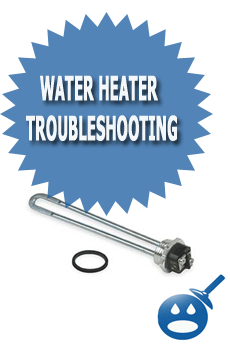
Depending on what type of water heater you have will determine what type of things you will want troubleshoot. For example, If you have an electric water heater, you could have blown a fuse or circuit breaker. If you have a propane gas fired water heater, a simple thing such as running out of propane fuel will cause you not to have any hot water. In many states Oil is used to also heat hot water. These types of water heaters are called “Oil Fired Hot water Heaters” and they are powered by an oil fired burner that can also break down if not taken care of properly. There are many things like a clogged nozzle from running out of heating fuel, bad electrodes and many other things can cause your oil fired water heater to fail.
Is My Water Heater Gas, Oil Fired Or Electric?
Before you can troubleshoot your water heater you will first have to find out of your water heater is gas or electric. The easiest way to do this is to look on the water heater. Most of the time there will be a sticker from the manufacture stating what type of water heater it is. If there is no sticker or tag on the water heater you can also find out of it’s gas or electric a few more ways. You can look at the water heater and see if there is a gas valve and a gas line running to it. If so that means you have a gas water heater. If the only thing you see is an electric line that means you have an electric water heater.
The last type of water heater you could have would be an oil fired water heater. If you were to have an oil fired water heater you would see oil lines running to your water heater from either an indoor or outdoor oil tank. You could also look for a brand name like Beckett or Carlin Burner on the from of your water heater. These two types of oil fired burners are very common on oil fired units.
How To Adjust The Water Heater Temperature:
Gas water heater temperature adjustment:
Having the perfect temperature hot water in your home or business can be accomplished with a water temperature gauge and an adjustment of the dial on your water heater. The factory setting for most water heaters is 120 degrees which is the safest temperature to prevent burns or scalding. Most of the time this setting will be the maximum allowed by state law. You will always want to check with your local plumbing and state laws before making any adjustments. You may also want to hire a licensed plumber if you feel you can not do this yourself.
The first thing you will want to do before you adjust the temperature of the water heater is to determine the temperature of the water that the water heater is currently providing. You can do this by walking over to any fixture and then running your water for 5 minutes or so. Then you will want to use your water temp gauge and take a reading on the hot water coming from the faucet. If your water is at 120 degrees or hotter you will not want to adjust the water any hotter. The ideal setting as we mentioned above and required by law in most places is 120 degrees. If your water temperature is lower then that you can adjust it to the 120 degree mark if you like.
Now that you have found out how hot your water heater is you can adjust the dial on your water heater lower or higher to make the temperature hotter or colder. You can find the adjustment dial for the water heater temp on the front of the water heater. In most cases you can turn the dial to the right for hotter water and to the left for colder water. Most water heaters will have a diagram on the adjustment knob so you know which way to turn. Some models will even have a temperature setting to let you know where the degree markers are. Once you have adjusted the dial on your water heater, you will want to wait around 20 minutes and then re-check the temperature of the water with your gauge again. If your water is to hot or cold still after re-checking you may want to adjust the water heater again until you get the desired results.
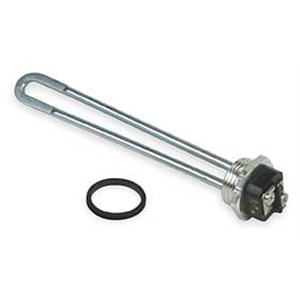
Electric water heater temperature adjustment:
Adjusting the water temp on your electric hot water heater can be done by following a few steps. You will want to cut the power off to the water heater before making any adjustments.
To adjust the temperature on an electric water heater you will want to remove the upper and lower thermostat access panels. To remove these panels you will need a Flathead screwdriver to remove the screws that hold on the panels. Inside of these panels will be a temperature adjustment screw that you can turn to adjust the temperature of the electric water heaters thermostat. Just like the gas fired water heaters, you do not want to adjust the water heater any higher then 120 degrees. The factory setting for most electric hot water heaters will be at the 120 degree mark.
Once you adjust both the upper and lower thermostats on the electric water heater you will want to wait around 30 minutes before rechecking the water temperature.
How To Determine Water Heater Sediment Amount:
Over the water heaters lifetime amounts of sediment will start to build up inside of the water heater tank. This sediment is caused by bad water conditions as well as repairs that were not preformed on the water heater. You can find out how much sediment and rust is inside your water heater by draining it. Before you drain your water heater you will want to shut it off. If you have a gas water heater you will want to shut the gas. If you have an electric fired water heater you will want to shut of the electric power.
Once you have shut the power or fuel source to the water heater you will want to also shut the water supply off as well. Some water heaters will have hot and cold valves right above the water heater called “isolation valves” that will allow you to cut the water off right there. If you do not have isolation valves you will have to shut the water supply off at the nearest point to the heater. Now that you have the power and the water shut off to the water heater you can open the drain valve on the bottom of the water heater and let the water drain into a bucket for a few minutes or until the bucket is full. Once the water settles you will be able to see how much sediment you have in your water.
It is always a good idea to have your water heater drained and refilled at least once a year to prevent and help protect your heater.
How To Restart An Oil Fired Water Heater:
If you have run out of fuel oil and you need to restart your oil fired burner there is a few things you will need to check first. The first thing you will of course want to do is to make sure that you have more oil delivered. Once you are sure that you have enough in the tank you will want to hit the “burner reset button”. On most models like the Beckett Oil Burner, you will find the red reset button on the unit. Hit the reset button and you should hear the motor fan turn on. Once the motor fan on your burner turns on you will soon hear the burner fire if everything is running correctly. If you hit the reset button and your Beckett or Carlin burner does not fire, then there could be something wrong with the unit. Most of the time when you run out of fuel oil, you risk clogging up the nozzle and the fuel filters. If you hit the reset button more then once and the burner does not fire you will be set on “lock out”. A this point you should call a qualified service professional if you do not have experience. However if you do have experience you will want to replace your burner nozzle and fuel filters before you try and restart your oil fired water heater again because you probably have a clog in once of the parts we just mentioned.
How To Change Water Heater Top Valves:
On top of your water heater you can find a set of isolation valves that will shut off the hot and cold water. Each water supply line(hot and cold) will have a valve. These valves come in very handy when you need to repair or drain the water heater. These isolation valves are usually 1/2″ or 3/4″ in size and are usually made from brass. These valves are called a “ball valve” and used all the time on the installation of water heaters. Watts is the name of the company that is most famous for their ball valve. You will often see a Watts ball valve either in sweat or IPS style on most water heater installs.
In order to change these top valves on your water heater you will first have to shut down the hot and cold water supply to the water heater. Once you shut down both the hot and the cold feeds you can begin to change these valves. Depending on what type of pipe was used to plumb in your water heater will determine on what type of pipe you will be using to replace the valves. If your water heater is plumbed in with copper plumbing you can cut the copper valves out from the existing plumbing and then sweat in new valves. If the plumbing on your water heater is Pex tubing or black pipe, you will have have to replace the valves with the type that are attached to that type of plumbing. For example, a “sweat ball valve” is not the same as an IPS ball valve. So if you have black pipe you will need to get a thread valve. You also could alternatively replace the plumbing that is there with another type of material that fits within your plumbing code. If you have PEX plumbing and you wanted to switch it over to copper plumbing then al long as this met your local plumbing codes you could.
How To Drain Water Heaters Fast:
Draining a water heating can take a long time if you have a large sized water heater. The most common way that a water heater is drained is either with a garden hose or with a bucket. This may be fine if you are draining a small water heater of let’s say 20 gallons, but if you need to drain a water heater that was around the 100 gallon size the garden hose and the bucket could take forever.
The best and fastest way to drain a water heater of a large size is to use something called a “utility transfer pump”. The utility transfer pump also known in the plumbing and heating industry as a “pony pump” will drain a water heater 100x faster then gravity and a garden hose.
What you will want to do is to hook a short double ended hose from the water heater drain valve to one side of the pony(transfer pump). A washing machine hook up hose works great for this. Then on the other side of the pump you will want to hook up a long garden or drain hose and then unroll that to the location where you want the water to drain off.
Once you have connected both the short double ended hose and the long drain hose you can plug in the utility transfer pump. When the pump is plugged in your water heater will start to drain at a rapid rate. You will also want to open up the pressure relief valve so that more air flow will help the water heater drain even faster.
How To Change A Water Heater Element:
The way that the electric water heater makes its heat is by using something called a heater element. When this heater element goes bad it can be changed by buying a replacement water heater element. A water heater can have one or two elements depending on its size. Small under the counter water heaters will only have one heater element. Most water heaters have two elements. One element is located on the top of the water heater and then other towards the bottom of the water heater.
To change the water heater element you first will want to shut the power down to the water heater. You will also need to shut the water supply off to the water heater. You can do this with your isolation valves if you have them. Once you shut down the power to the water heater you will want to also drain the water heater to the point need. For instance if you were only changing the top water heater element you would only have to drain the water heater down past the top element area. If you are however changing both of the elements at the same time as you should then you might as well drain the water heater completely. Once the water heater is powered off and drained you can remove the elements and then replace them with the new elements.
You can find replacement water heater elements at most local plumbing supply strores as well as many places like Home Depot and Lowes. You can also hire a licensed plumber to change the water heater elements for you. Once you have changed the water heater elements you will want to turn the water back on and refill the water heater. Once your water heater is full you can turn the power back on. Now that the power is back on, let the water heater get up to temperature and then check then temperature at the faucets to make sure your water is nice and hot. These are the most common troubleshooting problems that water heaters will require. There are many other things that will have to be adjusted and repaired on your water heater as well. Some of these things such as C02 testing should only be done by a licensed plumbing and heating professional.

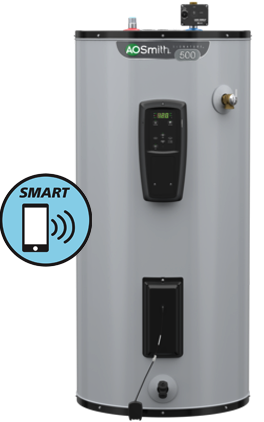
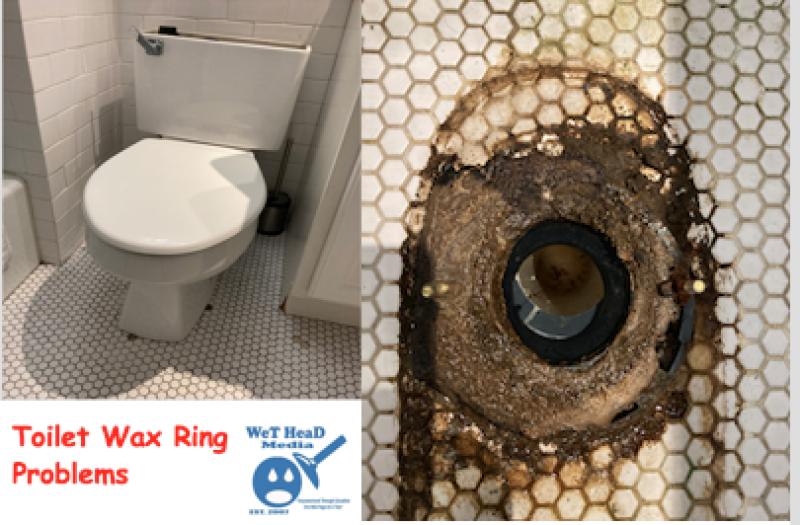
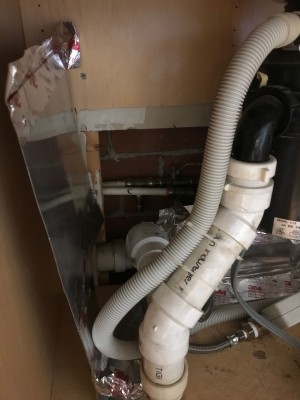
I have a A. O. Smith GCV 40 water heater and during full burn it will shut off, hear click and flame goes out along with pilot. You can relight pilot. Thoughts?
I have a Beckett oil fired water heater that was just put in new about a year ago. We noticed no hot water this eve and went down to check. The trip light was flashing and I pushed it to reset. The unit came right back on and began running, but I am not sure if the pilot is still lit. Would it restart if the pilot would have gone out?
Anyone have any ideas why a fairly new unit would suddenly shut off on it’s own? If it restarted when I reset it, should that be OK or is there something more to be concerned with? Any ideas or knowledge would be appreciated!
my Rheem water heater needs the reset button reset frequently? What is causing this
I have a 40 gallon electric water heater which I heard a popping noise. I had power at both the upper and lower heating elements and the reset button did NOT trip nor did the breaker. But, no hot water the next day. I changed both heating elements and eclectic boards and hooked them back up the same as before which is the same as on displayed on the box purchased. I have power throughout yet NO hot water. The elements came pre-set at 125 degrees. Any suggestions at all?
I have a 40 gal. HWH gas and the pilot won’t stay on.
when i turn on my hot water the water is of a rusty color . what could be causing this. my hot water heater is oilfired and i think glass lined